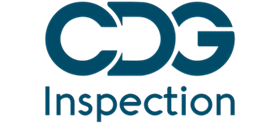Introduction:
Good Manufacturing Practice (GMP) regulations are essential in ensuring the quality, safety, and consistency of pharmaceutical, food, and cosmetic products. GMP guidelines provide a framework for manufacturing processes that minimize the risks associated with product defects, contamination, and deviations. To validate compliance with these regulations, companies often undergo GMP audits, which are systematic evaluations conducted by qualified auditors. This article delves into the intricacies of GMP audits, exploring their objectives, processes, key components, and benefits in assessing compliance with GMP regulations.
Objectives of GMP Audits:
GMP audits serve several key objectives, primarily revolving around ensuring that manufacturing practices align with established GMP guidelines. The overarching goals of GMP audits include:
- Ensuring Product Quality and Safety: GMP audits focus on verifying that manufacturing processes, facilities, equipment, and personnel practices are designed and implemented to guarantee the quality and safety of products.
- Minimizing Risks: GMP audits identify potential risks and vulnerabilities in the manufacturing process that could lead to product defects, contamination, or deviations from established quality standards.
- Compliance Verification: Auditors assess whether the company’s practices and procedures adhere to the specific GMP regulations relevant to their industry. This includes evaluating documentation, recordkeeping, and reporting procedures.
- Continuous Improvement: GMP audits promote a culture of continuous improvement by identifying areas where processes can be optimized for efficiency and effectiveness, leading to higher product quality and safety.
- Regulatory Compliance: Demonstrating compliance with GMP regulations is often a regulatory requirement for obtaining and maintaining necessary licenses and approvals from regulatory authorities.
Components of GMP Audits:
GMP audits involve a comprehensive evaluation of various aspects of the manufacturing process. These components collectively contribute to determining the company’s compliance with GMP regulations:
- Facility and Equipment: Auditors inspect manufacturing facilities and equipment to ensure they are designed, maintained, and operated to prevent contamination, maintain product integrity, and facilitate proper cleaning and maintenance.
- Personnel Practices: Evaluating personnel qualifications, training, hygiene, and adherence to appropriate gowning procedures is critical in maintaining product quality and minimizing contamination risks.
- Documentation and Recordkeeping: Auditors scrutinize documentation practices, including batch records, standard operating procedures (SOPs), and validation documents, to ensure accurate and thorough recordkeeping.
- Raw Materials and Suppliers: The quality and suitability of raw materials are paramount in ensuring product quality. Audits assess the company’s procedures for qualifying and monitoring suppliers and their materials.
- Process Controls: Auditors review process controls to verify that manufacturing steps are well-defined, monitored, and capable of consistently producing products that meet quality standards.
- Validation and Qualification: Assessing the validation of manufacturing processes, equipment, and cleaning procedures ensures that these are properly qualified to meet GMP standards.
- Change Control: Change control procedures are evaluated to ensure that any changes to processes, equipment, or materials are properly assessed for their impact on product quality and safety.
- Complaint Handling and Investigations: Audits review how the company handles complaints, deviations, and investigations to ensure that appropriate corrective and preventive actions are taken.
- Quality Control and Testing: Evaluation of quality control procedures, testing methodologies, and the accuracy of testing equipment is crucial to ensure that products meet established specifications.
- Batch Release: Audits may assess the batch release process to confirm that products are not released for distribution until they meet all required quality standards.
GMP Audit Processes:
GMP audits follow a systematic process to comprehensively evaluate a company’s compliance with GMP regulations. The process typically involves the following stages:
- Pre-Audit Preparation: The audited company prepares for the audit by gathering relevant documentation, records, and information related to their manufacturing processes, quality systems, and procedures.
- Audit Planning: The auditor and the auditee (the company being audited) collaborate to establish the scope, objectives, and schedule of the audit. This includes identifying key areas to be assessed and determining the audit team composition.
- On-Site Inspection: Auditors conduct a thorough on-site inspection of the manufacturing facilities, laboratories, and relevant areas. They interview personnel, observe processes, and review documentation to assess compliance.
- Document Review: Auditors examine documentation such as batch records, SOPs, validation reports, and quality control records to verify that procedures are followed and properly documented.
- Interviews: Auditors engage with personnel at various levels to assess their knowledge of GMP regulations, procedures, and their role in ensuring product quality and safety.
- Data Analysis: The audit team analyzes collected data and information to identify any deviations, non-conformances, or areas of concern that might indicate potential compliance issues.
- Audit Findings: Auditors compile their findings, which include observations, non-conformances, and areas of improvement. These findings are typically categorized based on their severity and impact on product quality and safety.
- Report Generation: A comprehensive audit report is generated, detailing the audit process, findings, observations, and recommendations for corrective and preventive actions. This report serves as a valuable reference for the audited company’s future improvements.
- Corrective Actions: The audited company responds to the audit findings by developing and implementing corrective and preventive action plans. These plans aim to address identified issues and prevent their recurrence.
- Follow-Up and Closure: Auditors may conduct follow-up audits to verify the effectiveness of the corrective actions taken by the company. Once all issues are resolved satisfactorily, the audit is considered closed.
Benefits of GMP Audits:
GMP audits offer numerous benefits to both companies and consumers by ensuring product quality, safety, and compliance with regulatory requirements. Some key benefits include:
- Enhanced Product Quality: GMP audits contribute to improved manufacturing processes, reducing the likelihood of defects, contamination, and deviations that can compromise product quality.
- Risk Mitigation: Identifying and addressing potential risks during audits helps prevent incidents that could negatively impact product safety and consumer health.
- Regulatory Compliance: Successful GMP audits demonstrate a company’s commitment to adhering to regulatory requirements, facilitating the acquisition and maintenance of necessary licenses and approvals.
- Consumer Trust: Companies that consistently pass GMP audits build consumer trust by demonstrating their dedication to producing safe and high-quality products.
- Operational Efficiency: Audits identify areas for process optimization and efficiency improvements, leading to reduced waste, streamlined operations, and cost savings.
- Continuous Improvement: GMP audits promote a culture of continuous improvement by highlighting opportunities for enhancing manufacturing practices and quality systems.
- Global Market Access: In the global marketplace, GMP compliance is often a prerequisite for exporting products to different countries, expanding market reach.
- Preventing Recalls: By identifying and rectifying issues before they escalate, GMP audits help prevent costly product recalls and associated reputational damage.
Conclusion:
GMP audits play a pivotal role in assessing compliance with Good Manufacturing Practice regulations across industries that produce pharmaceuticals, food, and cosmetics. These audits are designed to ensure product quality, safety, and consistency by evaluating various components of manufacturing processes, facilities, personnel practices, documentation, and quality control procedures. By systematically following a process that involves pre-audit preparation, on





